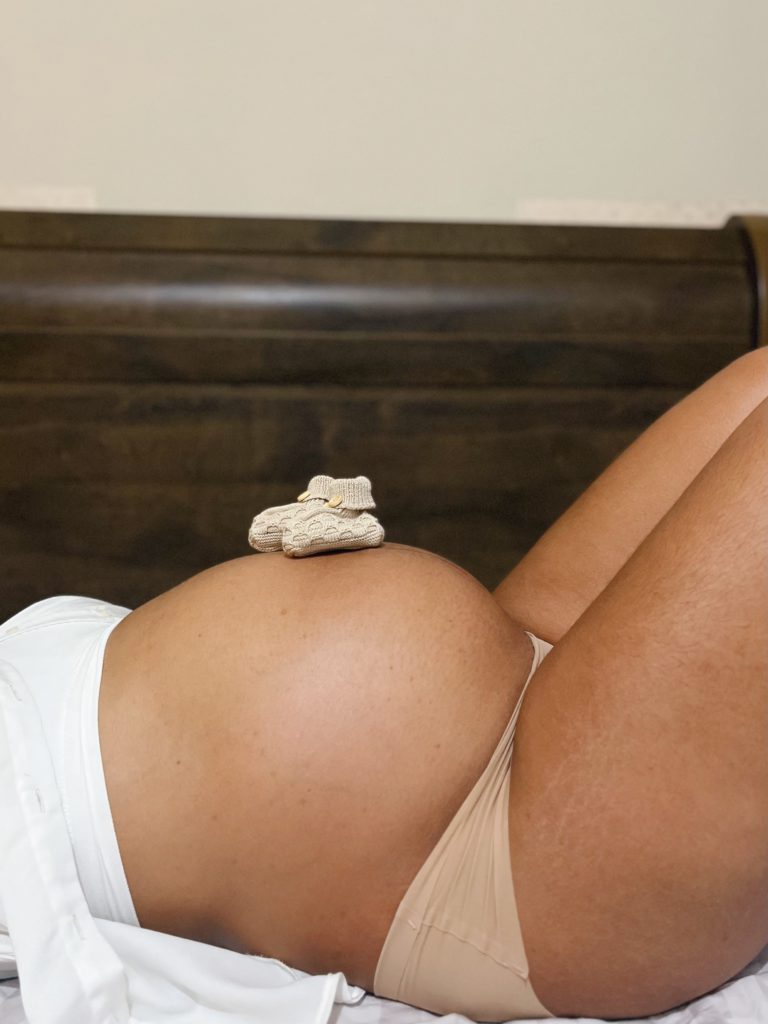Childbirth is a really intense process. However, breathing calmly and correctly can make the process much easier. Therefore it is a good idea to learn and practise certain childbirth breathing techniques as your due date gets closer.

Patterned breathing refers to the act of breathing at a variety of different speeds and depths. The goal is to find breathing patterns that can get you to relax in the labour room. The ideal breathing pattern should be at a comfortable respiratory rate and it should not cause you to feel dizzy or out of breath.
Advantages of Childbirth Breathing Techniques
Breathing exercises are beneficial when preparing for childbirth. Some benefits of patterned breathing during childbirth include:
- eases the birthing process by helping with pushing during labour.
- keeps the mother calm and helps her react more positively to pain.
- provides a sense of control and security.
- makes contractions more efficient.
- helps the mother deal with feelings such as stress, anxiety or anger.
- increases oxygen thereby providing more energy and power for both mother and baby.
Types of Breathing Techniques
It is good to remember that the childbirth breathing technique you will need to use will change with the different stages of labour. This is because there is no one ideal breathing technique for labour.

However, different childbirth breathing techniques have been shown to be beneficial at different stages of labour.
Early Stages of Labour
Some good techniques for his stage include:
Slow Breathing
When a contraction is strong enough to prevent you from moving or speaking without pausing, start slow breathing. Use this breathing technique for as long as you find it helpful. Here’s how it’s done:
- Find a focal point.
- When the contraction starts, let out a long, calming breath. As you exhale, let go of all the tension in your body.
- Breathe in deeply through your nose and out slowly through your mouth.
- Pause until the urge to breathe in comes again.
- Concentrate on relaxing a different part of your body with each exhale
Light Accelerated Breathing
This is done when labour is actively progressing and the contractions intensify. Here’s how it’s done:
- Find a focal point.
- When the contraction starts, let out a long, calming breath. As you exhale, let go of all the tension in your body.
- Try to match your breathing pace with the pace of the contractions and keep your mouth and shoulders relaxed as you breathe in deeply through your nose and out through your mouth.
- At this point, start taking little, gentle breaths through your mouth. Your breathing rate should increase along with the intensity of the contraction.
- Take a final deep breath as the contraction ends.
Transition (Variable) Breathing
This is typically used when transitioning into the second stage of labour. However, if you’re feeling worn out or overwhelmed during the first stage of labour, you can also use it. Here’s how it’s done:
- Find a focal point, preferably your spouse or a photograph.
- When the contraction starts, let out a long, calming breath. As you exhale, let go of all the tension in your body.
- Take five to twenty light, shallow breaths through your lips every ten seconds.
- Every third, fourth, or fifth breath, try to exhale more forcefully and for a longer period of time.
- When the contraction ends, take one or two deep breaths to calm yourself.

Second Stage of Labour
This is the period between when your cervix is fully dilated and the delivery of your baby.
Expulsion Breathing
This is used once the cervix is fully dilated and the second stage of labour has started. It is important to note that expulsive breathing should be used only after your cervix is fully dilated otherwise, it could harm your cervix. Here’s how it’s done:
- Find a focal point. You can focus on your spouse, a photograph or the baby moving down and out.
- When the contraction starts, let out a long, calming breath. As you exhale, let go of all the tension in your body.
- When you get the overwhelming urge to push, bear down while tucking your chin into your chest. Then bend your body slightly forward and hold your breath while you push. Slowly exhale after every five to six seconds while you do this.
- When the contraction ends, take one or two deep breaths to calm yourself.
Tips to Remember
Childbirth is an intense process, even for moms who have given birth before. However, practising these breathing techniques and keeping a positive mindset may make the birthing process easier. Just breathe in, breathe out, and your baby will pop right out!

